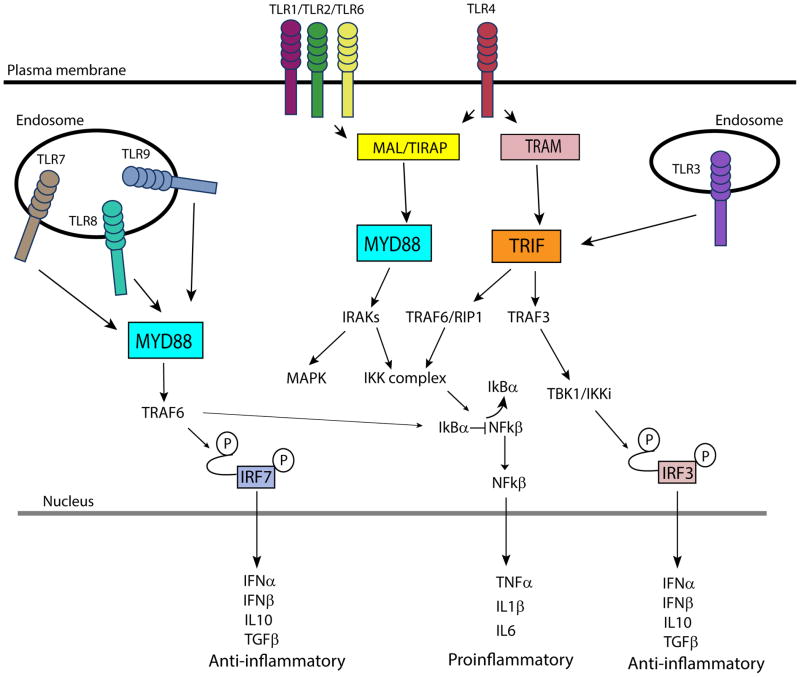Figure 1.
Toll-like receptor (TLR) signaling pathways. Once activated by their cognate ligands, TLRs bind their respective adaptor molecules in the cytoplasm to initiate intracellular signaling pathways. This results in the activation of other mediators ultimately resulting in the expression of pro- or anti-inflammatory molecules. Specifically, the activation of IKK complex results in the release of nuclear factor-κ B (NF-κB) that translocates to the nucleus to initiate the expression of proinflammatory molecules. Instead, the phosphorylation of interferon regulatory factor 3 (IRF3) and interferon regulatory factor (IRF7) results in the induction of anti-inflammatory molecules. Abbreviations: IFNα, -β, interferon-α, -β; IKK, Iκb kinase; IL1β, -6, -10, interleukin-1β, -6, -10; IRAK, IL-1 receptor-associated kinase; IRF3, interferon regulatory factor 3; MAL/TIRAP, MyD88 adaptor-like protein; MYD88, myeloid differentiation factor-88; RIP1, receptor interacting protein 1; TIR, toll-interleukin 1 receptor; TBK, TANK-binding kinase; TGFβ, transforming growth factor β; TNF, tumor necrosis factor; TRAF3, -6, tumor necrosis factor receptor-associated factor 3, -6; TRAM, TRIF-related adaptor molecule; TRIF, TIR domain-containing adaptor protein inducing interferon-β.

